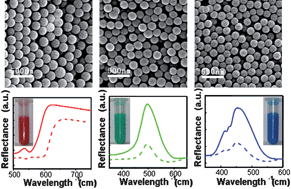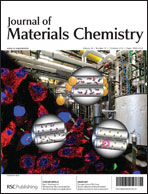The identification of chromatic ink particles with characteristics of good light stability, bright color, narrow distribution and high surface charge density is important. In this paper, the preparation of pigment-based RGB tricolor ink particles via mini-emulsion polymerization is reported. Narrow distributed pigment-based ink particles are obtained with the assistance of sodium dodecyl benzenesulfonate. Their large surface charge quantity is confirmed by zeta potential values in the range of −40–−50 mV. The hues of all the ink particles are consistent with their corresponding pigments after coating with polystyrene, according to the diffuse reflectance spectra measurements. In the artificial accelerated aging test (UV radiation exposure for 56 h), the as-prepared samples present good UV light durability, especially compared with the current dye-based ink particles. Finally, a chromatic electrophoretic display cell consisting of tricolor subunits is successfully fabricated using dispersions of RGB ink particles in a mixed dielectric solvent with white particles as contrast.

You have access to this article
 Please wait while we load your content...
Something went wrong. Try again?
Please wait while we load your content...
Something went wrong. Try again?


 Please wait while we load your content...
Please wait while we load your content...